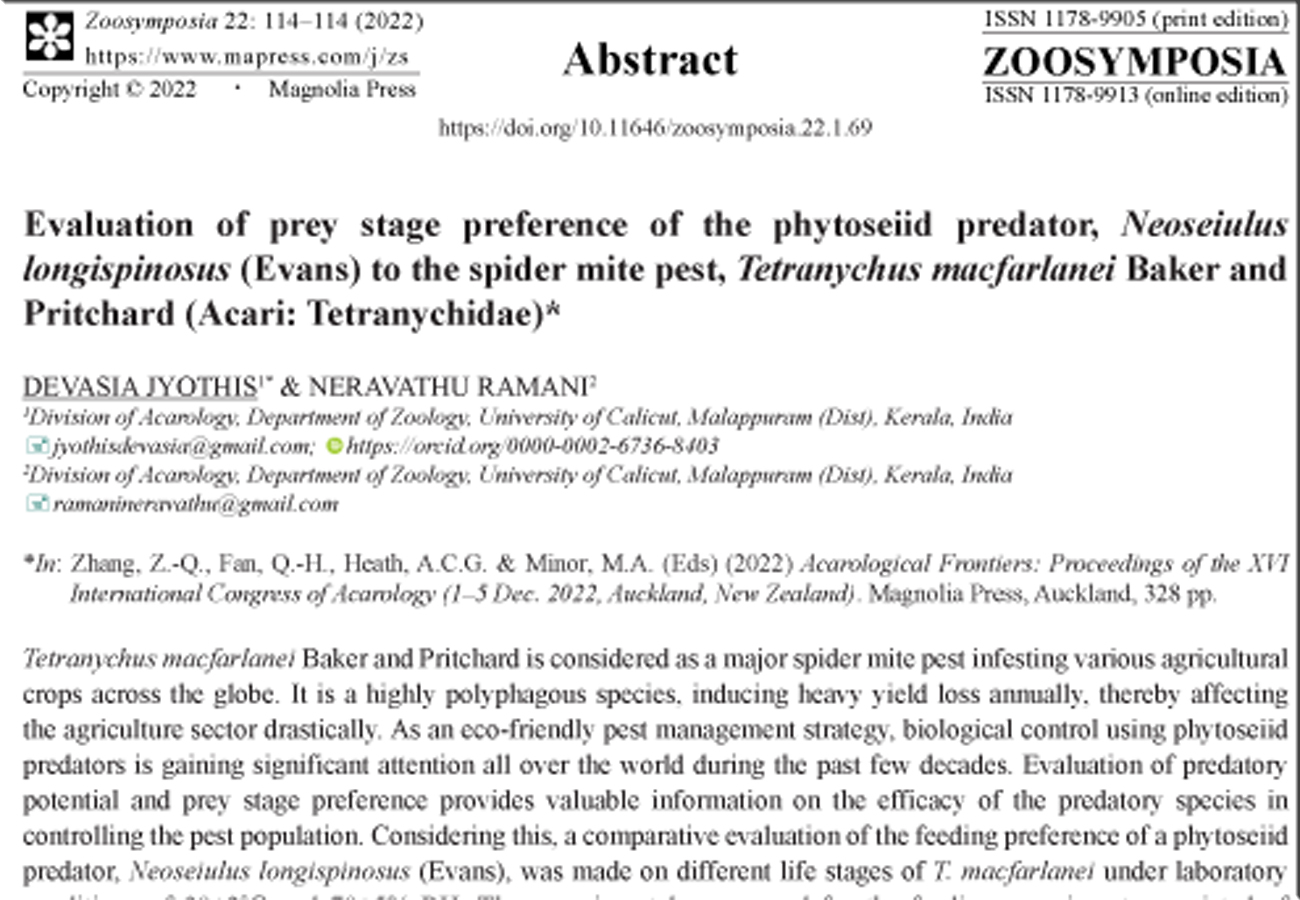Abstract
Tetranychus macfarlanei Baker and Pritchard is considered as a major spider mite pest infesting various agricultural crops across the globe. It is a highly polyphagous species, inducing heavy yield loss annually, thereby affecting the agriculture sector drastically. As an eco-friendly pest management strategy, biological control using phytoseiid predators is gaining significant attention all over the world during the past few decades. Evaluation of predatory potential and prey stage preference provides valuable information on the efficacy of the predatory species in controlling the pest population. Considering this, a comparative evaluation of the feeding preference of a phytoseiid predator, Neoseiulus longispinosus (Evans), was made on different life stages of T. macfarlanei under laboratory conditions of 30±20C and 70±5% RH. The experimental arena used for the feeding experiments consisted of mulberry leaf discs (2 cm2) uniformly arranged over 2% semi-solidified agarose medium placed inside a glass Petri dish. The results revealed that the feeding preference of the adult predator towards the prey stages after 24 hours of experiment followed a decreasing sequence of egg (68%)> nymph (13.3%)> larva (6.6%). The predator nymph also followed a similar order of preference with respective consumption rates of 22%, 6.6% and 6.6% on the egg, larva and nymph of the prey mite, indicating that both the nymphs and the adult females of the predator displayed a significant preference to feed on the eggs of T. macfarlanei. Both predatory life stages showed no preference to the adult females of T. macfarlanei. Statistical analysis using ANOVA revealed a significant variation (p < 0.05) in the feeding preference of the predatory life stages towards the varied prey stages. Thus, the results of the study clearly showed the bio-control potential of N. longispinosus against T. macfarlanei.
References
-


